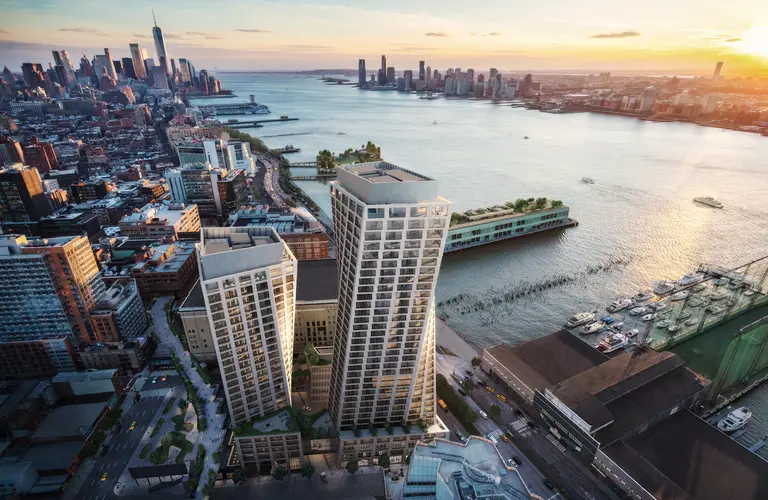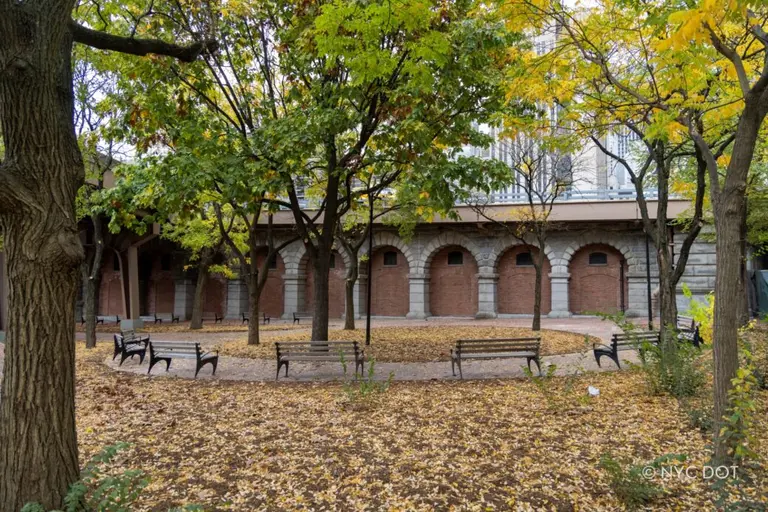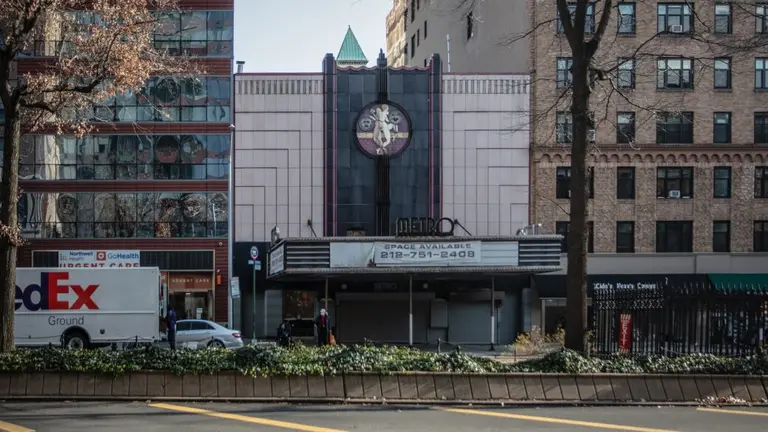By 2020, the U.S. will have 300 food halls
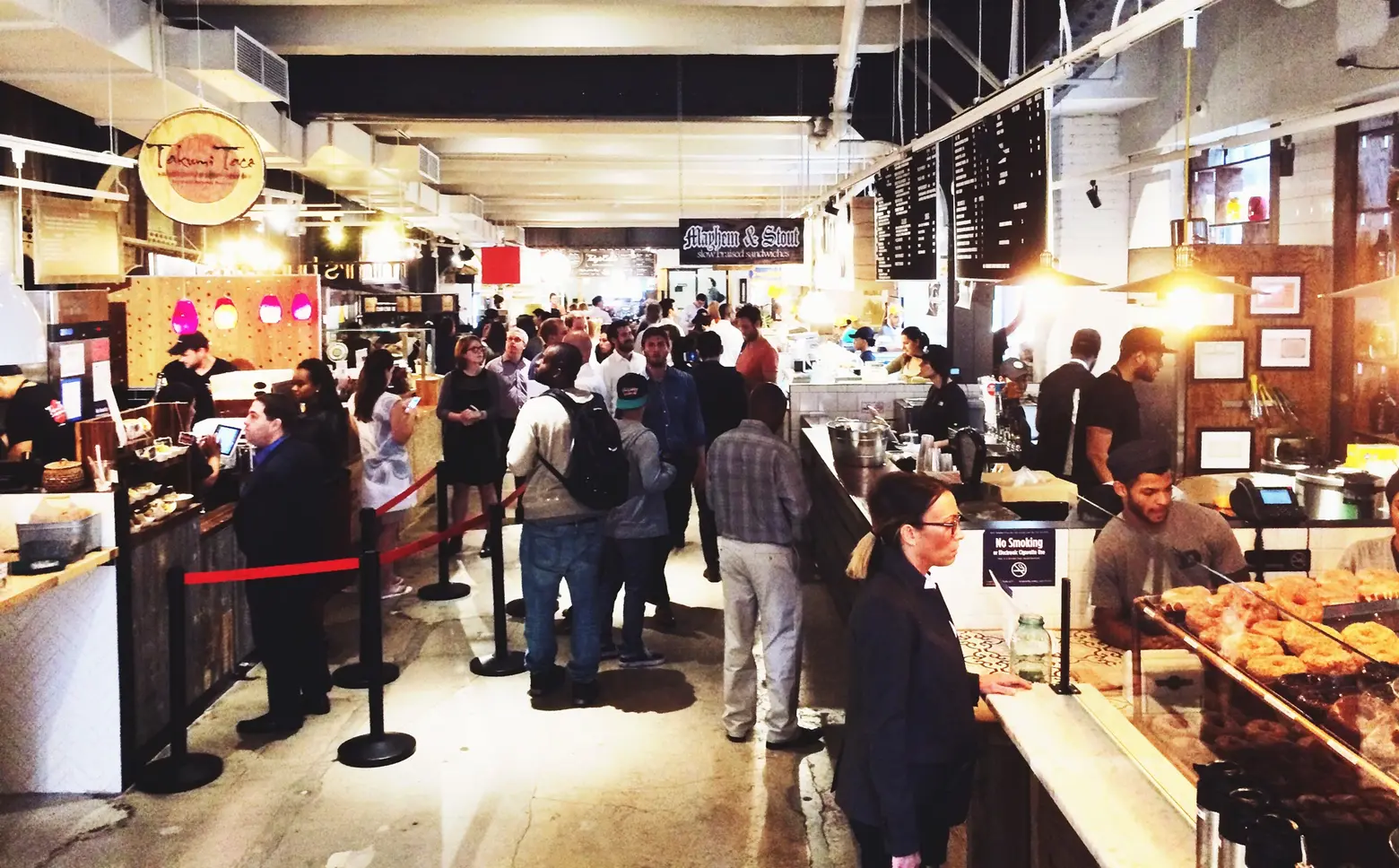
UrbanSpace Vanderbilt. Photo by Shinya Suzuki/Flickr
Between 2015 and 2020, the number of food halls operating nationwide will go from 70 to 300, finds a new Cushman & Wakefield report. This trend is very clear in New York City with 25 active permanent food halls and at least 10 others planned, or rumored, for the near future. Some of the most notable examples in the works are the TimeOut DUMBO food hall and the Essex Crossing’s Market Line (set to be one of the largest in the world), in addition to examples like the very successful Urban Space which opened another food hall only six blocks from one of its other locations.
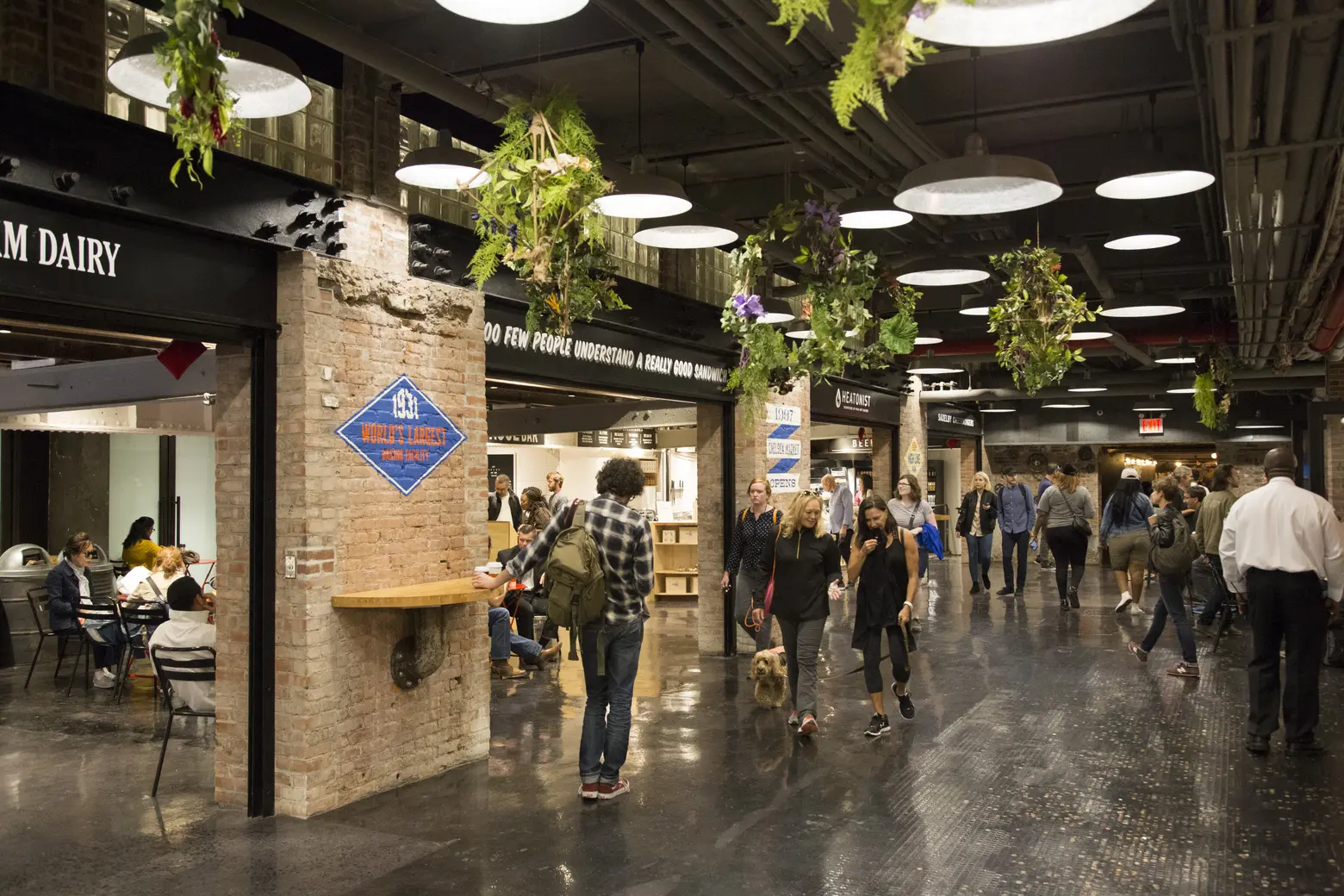 Chelsea Market. Photo courtesy of Jamestown
Chelsea Market. Photo courtesy of Jamestown
John Brod, a partner of ABS Partners Real Estate, told the Commercial Observer, “Today’s growth in retail is all about ‘entertainment, experience and interactivity, I can’t think of a more ‘experiential’ retail experience than a food hall—which in addition to ‘interactivity’ appears to our senses of sight taste and smell. The food hall experience hits all the important levers. Additionally, the food hall has become a destination for tourists. Walk into Eataly or the Grand Central Market at any time and you will hear a multitude of languages being spoken or someone taking pictures or selfies.”
Food halls also offer choices for everyone in a group – each person can be in the mood for something different. The study found that 40 percent of millennials will order something different every time they visit the same restaurant, 55 percent of them favor communal tables when dining out, and they spend 44 percent of their food dollars on eating out.
Chelsea Market, NYC’s oldest food hall made the news recently with Google’s $2.4 billion purchase of the building, the second biggest single sale in the city’s history. Foodies were assured that the market would continue seamlessly despite the change of ownership and the owner, Jamestown, intends to maintain the branding rights and intellectual property connected to the Chelsea Market name outside of Manhattan. Jamestown is already scoping out “emerging neighborhoods” throughout the U.S. and Europe and hopes to announce one to two new locations for their new concept before the end of the year. Phillips told the Journal, “The concept travels…Our intention is to create this community of buildings.”
The report also found that food halls are good business. In the food industry, nothing is guaranteed yet despite growing at a fast pace, not one permanent food hall in New York has closed to date. Further, in the entire country, only four food hall projects have closed over the past two years and one of them was only a temporary project that did not fail.
The report concludes that food halls are not a fad, they are here to stay. They summarize the typical food hall as unlike mall food courts, food halls celebrate food and do not focus on large, corporate chains but rather artisanal and local options, they are a “celebration of food itself;” Food halls are built on the ancient model of a central market as the focal point of community involvement, and food halls typically offer affordable options. “The food hall is about more than just real estate. The food hall is a structured concept that gives restaurateurs an overall cheaper operating model, requiring significantly less in start-up capital.”
So get ready and get hungry!
Here is the Cushman & Wakefield food hall roundup:
- American Market by Todd English (2018) 12,000 sf, 229 West 43rd Street, Manhattan
- Canal Street Market (2017) 12,000 sf, 265 Canal Street, Manhattan
- Chelsea Market (1997) 164,755 sf, 75 Ninth Avenue, Manhattan
- Chelsea Terminal Warehouse (2016) 20,000 sf, 271 11th Avenue, Manhattan
- City Acres Market (2017) 15,000 sf, 70 Pine Street, Manhattan
- City Kitchen at Row NYC (2015) 4,000 sf, 700 Eighth Avenue, Manhattan
- DeKalb Market Hall (2017) 60,000 sf, 445 Gold Street Brooklyn
- Eataly NYC Downtown (FiDi) (2016) 45,000 sf, 4 World Trade Center, Manhattan
- Eataly NYC Flatiron (2010) 58,000 sf, 200 Fifth Avenue, Manhattan
- Essex Street Market (1940) 15,000 sf, 120 Essex Street, Manhattan
- Food Hall at Industry City (2014) 40,000 sf, 274 36th Street Brooklyn
- Gansevoort Market (2016) 8,000 sf, 353 West 14th Street, Manhattan
- Gotham Market at the Ashland (2017) 16,000 sf, 590 Fulton Street Brooklyn
- Gotham West Market (2013) 10,000 sf, 600 11th Avenue, Manhattan
- Great Northern Hall (in Vanderbilt Hall) at Grand Central Station (2016), 5,000 sf, 89 East 42nd Street, Manhattan
- Hudson Eats at Brookfield Place (2014) 35,000 sf, 200 Vesey Street, Manhattan
- Le District at Brookfield Place, Existing (2015), 30,000 sf, 200 Vesey Street Brookfield Place, Manhattan
- Plaza Food Hall / Todd English Food Hall (combined) (2010), 32,000 sf, 1 West 59th Street, Manhattan
- The Pennsy (Penn Plates) (2016) 8,000 sf 2 Pennsylvania Plaza, Manhattan
- TurnStyle Underground Market (2016), 30,000 sf, 1000 South 8th Avenue, Manhattan
- Union Fare (2016) 25,000 sf, 6 East 18th Street, Manhattan
- Urbanspace at 570 Lexington (2018), 11,400 sf, 570 Lexington Avenue, Manhattan
- UrbanSpace Vanderbilt (at the Helmsley Building) (2015), 12,000 sf, 230 Park Avenue, Manhattan
- Bruckner Market, Coming Soon (2018) 16,000 sf, 9 Bruckner Boulevard Bronx
- Mangia, Coming Soon (2019) 16,000 sf, TBD Bronx
- Time Out Market, Public Market Coming Soon (2020) 75,000 sf TBD, Dumbo
- Hudson Yards Food Hall, Coming Soon (2018) 35,000 sf, 10 Hudson Yards, Manhattan
RELATED:

